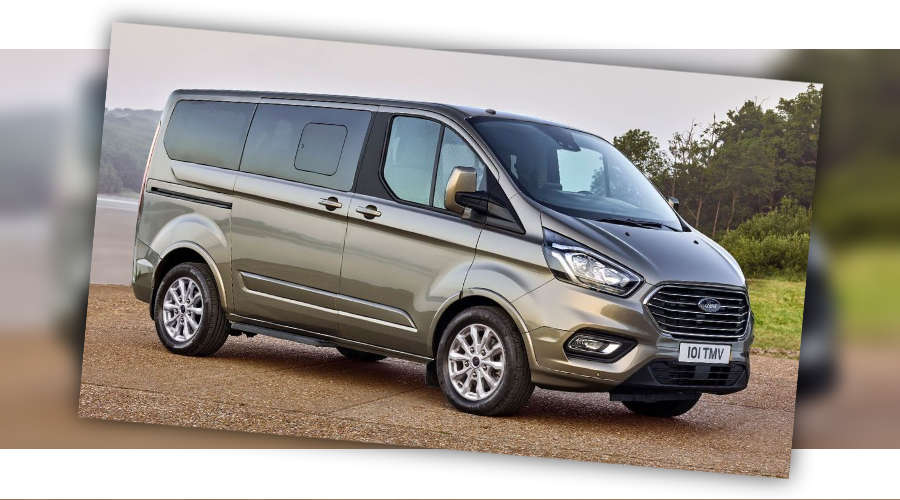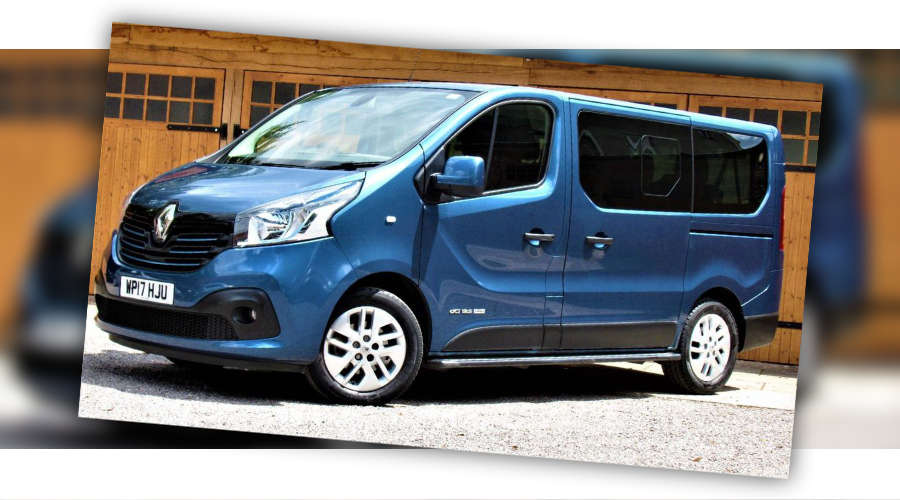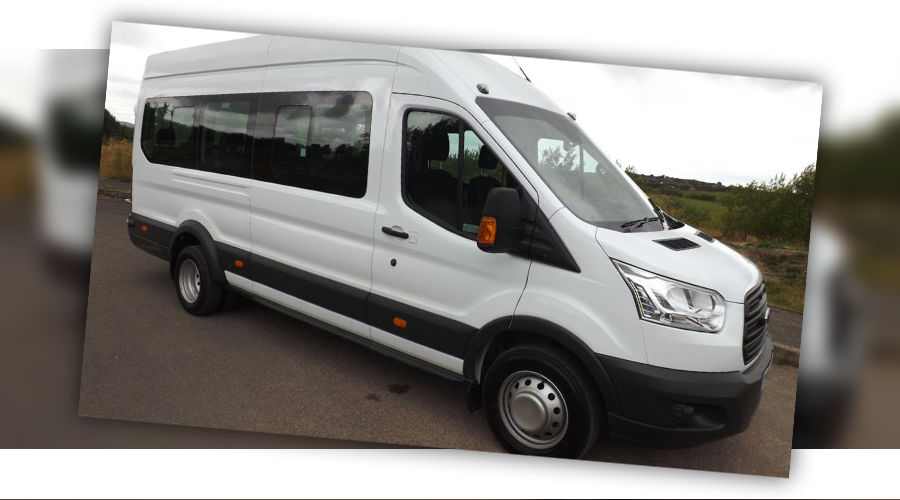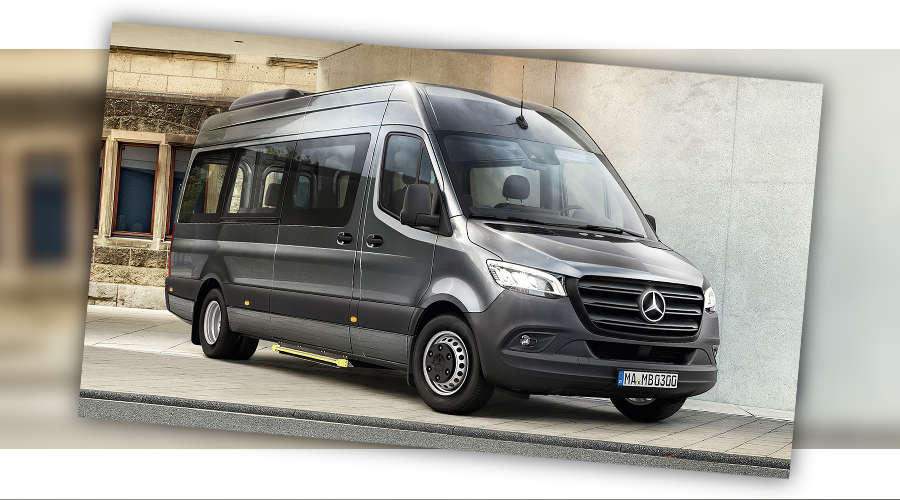There’s certainly some confusion surrounding driving licence category entitlements as to who can drive a minibus and who can’t. If you’re thinking, can I drive a minibus with a normal car licence? Here’s the definitive yes/no answer.
If you passed your normal driving test before 1 January 1997, you should automatically carry Category D1 & D1E entitlement on your licence. This means you can drive a minibus with no more than 16 passenger seats and with a maximum GVW of 3,500kg (3.5 tonnes) on a not-for-profit basis.
If you passed your normal driving test on or after 1 January 1997, you are entitled to drive a minibus with a maximum of 16 passenger seats on a not-for-profit basis. This is assuming the following criteria are met.
- You Must Be At Least 21 Years Old.
- Have Held A Valid Driving Licence For At Least 2 Years.
- You Do Not Use The Minibus For Towing.
- The Minibus Does Not Exceed 3,500kg (3.5 tonnes) or 4,250kg (4.25 tonnes) if fitted with disability aids such as a wheelchair ramp.
Reference: https://www.gov.uk/driving-a-minibus
Like our other great post on driving entitlement for a Luton Van, we’ll try to explain things as clearly and jargon-free as possible so, by the time you reach the end of this article, you’ll be in no doubt whether or not you can legally drive a minibus.
- Minibuses You Can Drive On A Normal Car Licence
- Can You Drive A Minibus Without Passengers?
- Driving A Minibus With 8 Passengers
- Driving A Minibus With 16 Passengers
- Can You Drive A Minibus Without D1 Entitlement?
- Driving A Minibus On A Category B Licence
- Minibuses & Category C Licence Entitlement
- Driving A Minibus On A Category D Licence
Minibuses You Can Drive On A Normal Car Licence
Driving A Ford Tourneo Minibus – For Up To 8 Passengers

The Ford Tourneo is one minibus you can drive on a normal car licence. It is an excellent 9 seater family wagon for large broods, soccer moms, taxi firms, or simply anyone who likes the space of a van with the comfort and convenience of a car.
With MPG at a respectable 48.7mpg for the petrol model and 62.8mpg for its diesel counterpart, fuel consumption isn’t too shabby either.
Space in this little shuttle bus is awesome too. With reversible second-row seats and enough luggage room to pitch a tent, the Tourneo minibus gets our thumbs up.
Driving A Renault Trafic Passenger Minibus – For Up To 8 Passengers

Hot on the heels of the Tourneo is the Renault Trafic Minibus. Again, this is another pocket people transporter that thinks it’s a car and you can legally drive with a normal car licence.
The solidly built Trafic is a testament to Renault’s unrelenting pursuit of innovation and reliability with the bulletproof diesel engine seeing real-world fuel consumption hover around 50mpg.
Abundant in comfort, style, reliability and practicality, it’s no real wonder why this particular carrier has become such a sensible choice for families and businesses alike.
The Renault Trafic minibus. It’s the little people van that can.
Driving A Ford Transit Minibus – For Up To 16 Passengers

Now we’re in the heavyweight division, the Ford Transit minibus is the undisputed king of the ring with a long-standing dominance in the minibus world.
You can drive this minibus unrestricted if you carry D1 entitlement and passed your test before January 1st 1997.
If you passed your test on or after January 1st 1997 then you can drive this minibus assuming the following is true.
- You Must Be At Least 21 Years Old.
- Have Held A Valid Driving Licence For At Least 2 Years.
- You Do Not Use The Minibus For Towing.
- The Vehicle Does Not Exceed 3,500kg (3.5 tonnes) or 4,250kg (4.25 tonnes) if fitted with disability aids such as a wheelchair ramp.
Seating capacity will accommodate up to a whopping 17 passengers, one more seat than allowed on a Category D1 licence, however, you do have the option to customise your Transit – to your needs – so that extra seat is a non-issue.
With decades of engineering experience to mould this marvel, Ford has got it right. The space is perfect, the trim quality is solid and the new HDT (Heavy Duty Truck) engine is nothing short of bulletproof.
The Ford Transit Minibus, the King still has his crown.
Driving A Mercedes Sprinter Transfer Minibus – For Up To 16 Passengers

Never to be outdone, the Mercedes Sprinter minibus picks up where the Transit leaves off. Streamlined for luxury and comfort, the Sprinter is the Arab Emirates of the minibus world and is another minibus you can drive on a normal car licence. This is assuming the same conditions as those for the Ford Transit above are met.
At the pinnacle of engineering excellence, the only optional extra missing from this vehicle is a flux capacitor and with two versions of the Sprinter minibus available, it’s gotten even better.
This is the minibus that thinks it’s a bus. Touching 7 metres with 15 passenger seats as standard, it does have the option of welcoming up to 19 passengers.
If it’s refinement & class you demand, the Mercedes Sprinter Minibus is your top choice.
Can I Drive A Minibus Without Passengers? Taking The Seats Out
This is a bit of a grey area and there are two schools of thought.
- A minibus is effectively a van with windows so without the passengers, you’re basically driving a normal van with seats fitted in the rear. You can legally drive drive a van so you can also drive a minibus on a normal car licence.
- The Driving Standards Agency has determined that your driving licence entitles you to drive a minibus with a maximum number of seats, not passengers. You are not entitled to drive certain vehicles.
The correct answer is #2. Always err on the side of caution and stick with what we know to be legal.
If you want to drive a large minibus but you are restricted to a vehicle with no more than 8 passenger seats, you can of course keep yourself legal by buying a 17 seat vengabus and simply removing 8 of the seats.
You will, without doubt, need to contact the DVLA to reclassify your vehicle with its new number of seats. The vehicle is classed as a 16+1 seat minibus until you inform the DVLA of any modification to the seating capacity.
You can do that here: https://www.gov.uk/change-vehicle-details-registration-certificate/how-to-tell-dvla
Driving A Minibus With 8 Passengers
According to the UK .Gov website, you can legally drive any vehicle, including a minibus with up to 8 passenger seats on a normal car licence and can tow a trailer not exceeding 750kg.
This is irrespective of when you passed your driving test or whether or not you have category D1 entitlement.
Reference: https://www.gov.uk/driving-licence-categories
Driving A Minibus With 16 Passengers
You may drive a minibus with up to 16 passenger seats if you passed your normal driving test before 1 January 1997. This includes entitlement to tow a trailer over 750kg MAM (Maximum Authorised Mass).
If you passed your driving test on or after 1 January 1997, then you may drive a minibus with up to 16 passenger seats assuming you’re at least 21 years old, have held your driving licence for more than 2 years and do not tow a trailer.
If you are not at least 21 years old or have not held your licence for at least 2 years, then the passenger seats in any vehicle you drive must not exceed 8.
Can I Drive A Minibus Without D1
If you’re driving licence has category D1 entitlement, you are entitled to drive a minibus assuming the following is true.
- The vehicle has no more than 16 passenger seats
- The vehicle is of a maximum length of 8 metres
- Any trailer on tow does not exceed 750kg
If you passed your test on or after 1 January 1997 or you don’t have a D1 entitlement on your licence, you’re only entitled to drive a vehicle with up to 8 passenger seats.
If you passed your driving test before 1 January 1997, you should already have category D1 entitlement so are entitled to drive a minibus with up to 16 passenger seats with a GVW of 3,500kg (3.5 tonnes).
Minibus Driving Entitlements On A Category B Car Licence
You may drive a minibus with no more than 8 passenger seats on a normal Category B car licence if you passed your test after 1 January 1997 and do not have Category D1 entitlement.
If you passed your test before 1 January 1997, you’re legally permitted to drive a minibus on a Category B licence however the .Gov website is unclear on seating capacity or GVW.
Passing your test before this date should entitle you to Category D1 on your licence by default, permitting you to drive any vehicle under that class. This includes a minibus with up to 16 passenger seats and a trailer.
Minibus Driving Entitlements On A Category C Licence
You may drive a minibus with up to 16 passenger seats and a GVW of no more than 3.500kg (3.5 tonnes) on a Category C licence.
This is only because you cannot obtain a Category C licence without first holding Category B entitlement.
If you do not have Category B or D1 on your licence, you may not drive a minibus regardless of what other entitlements you may hold.
A Category C licence entitles you to drive vehicles over 3,500kg (3.5 tonnes) referring mainly to lorries and HGV’s.
You should not confuse Category C entitlement with Category C1 or C1E.
Driving Entitlements For A Minibus On A Category D Licence
You can drive a vehicle with more than 8 passenger seats on a Category D Licence, including a minibus.
Category D entitlement refers to buses, minibuses or any other passenger-carrying vehicle (PCV) for hire or reward.
You should note however that Category D1 & D1E are separate categories. Entitlement of these categories alone does not allow you to operate vehicles permitted only under Category D.
When it comes to your driving licence, NEVER assume anything. Check the back of your licence for absolute assurance of what you are and what you are not entitled to drive.

That information isn’t correct according to the gov website, I have looked at my license that I passed and issued on 2001 mine says nothing for D1 only B1 have I got entitlement no busses of any discription yet In one part of your entitlements you have written up to 16 seaters then right down the bottom it mentions just 8 seaters only , in order to get the D1 privileges for 16 seats you need medical documentation and further driving stuff related to testing, so talk about confusing?
Hiya,
Category B1
Light vehicles and quad bikes
You can drive motor vehicles with 4 wheels up to 400kg unladen or 550kg if they’re designed for carrying goods.
Category D1
Minibuses
You can drive vehicles with:
no more than 16 passenger seats
a maximum length of 8 metres
a trailer up to 750kg
This is assuming you passed your test before 1 January 1997 in which case you should already have category D1 on your licence.
See https://www.gov.uk/driving-licence-categories for further info.
If you passed your test after 1 January 1997 then you can still drive a minibus on a normal car licence assuming the following conditions are met.
*********************************************
If the minibus is not for ‘hire or reward’
You might be able to drive a minibus with up to 16 passenger seats using your current car driving licence as long as there’s no payment from or on behalf of the passengers (it’s not for ‘hire or reward’).
Conditions you must meet…
You can drive a minibus within the UK as long as the following conditions apply:
you’re 21 or older
you’ve had your driving licence for at least 2 years
you meet the ‘Group 2’ medical standards if you’re over 70 – check with your GP if you’re not sure you meet the standards
you’re driving on a voluntary basis and the minibus is used for social purposes by a non-commercial body
the maximum weight of the minibus is not more than 3.5 tonnes – or 4.25 tonnes including specialist equipment for disabled passengers, for example a wheelchair ramp
you’re not towing a trailer
*********************************************
If you don’t meet the above conditions then you’ll need to take a comprehensive minibus test for D1 entitlement.
See https://www.gov.uk/driving-a-minibus for further info.
Hope that helps 🙂
A minibus is defined as a vehicle with between 9 and 16 passenger passenger seats (not including the driver). a “minibus” type vehicle with 8 seats is defined as an MPV (Multi Purpose Vehicle).
Hi Tony, yep you’re right, but whenever we get asked about them, nobody ever refers to them as an MPV. It’s always an 8 seater minibus so we just went with the common terminology
There is a crucial piece of information missing in your advice. If making use of the exemption which allows driving of light (under 3500 kg) minibuses without a D1 entitlement, *you* *must* *not* *be* *being* *paid*.
There are also a few misleading bits, like the statement that you need D1 *and* to have passed your test before 1997. If you have D1 then it doesn’t matter when you passed your test. Those who passed after 1997 can do a separate test and gain D1.
The bit about extra weight allowance for disabled access equipment is misleading on your page but misleading on the main government website too. The addition of a ramp for instance does not suddenly raise the limit to 4250 kg. What the primary legislation says is that the weight must be under 3500 kg without any extra kit, and under 4250 kg with it. I’ve come across an individual driving a 4000 kg minibus which happened to have a 60 kg ramp stowed inside it and arguing that that was OK – it’s not.
Hi John, generally I’m agreeing with your points. Here are my thoughts…
Noted, but in order to drive for hire or reward in the minibus world, you would first require a PCV operator’s licence for a role that accepts payment for transport. If you don’t have at least a D1 entitlement, you’re kinda prohibited by default from driving for a living anyway. Neither the DVLA nor any other licensing authority would issue an operator’s licence without the relevant driving entitlements on your driving licence.
Yep, you’re correct. I was simply referencing driving entitlements, as they stand, from the moment you pass your driving test 😉
Yeah, I have to agree with you. Without access aids such as a wheelchair ramp, a 3.5-tonne minibus shouldn’t exceed 3,500kg. For the extra weight allowance to be applicable, it would need to be a permanent fixture of the minibus itself before it is classed as part of the vehicle’s “kerb” weight. Simply stowing a ramp in the back is the same as stowing luggage or passangers.
So what about children’s nurseries?
My wife owns a children’s nursery and have a 16 seat transit minibus and an 8 seater tourneo connect.
I have a full D licence so I can drive both but now we are told by an independent LGV trainer that we require a Hackney license and an operator’s license!!
None of the journeys are for hire or reward they are for taking the kids on outings.
Vehicles are well maintained taxed and insured and obviously mot’d.
The staff that drive them as well have the correct entitlement.
What do I say??
According to the DVLA website here – https://www.gov.uk/driving-a-minibus, if you have full category D entitlement then the following is true: Category D You can drive any bus with more than 8 passenger seats (with a trailer up to 750kg MAM).
My wife actually drove a minibus for the care centre she worked at. Each journey was basically an outing, or an appointment for one of her residents, so there were no special entitlements or licences required. Like you, the transport was not for hire or reward.
This is not to say he is wrong, however. Traffic law changes constantly but what I can tell you is this.
There is no requirement for a Hackney licence unless you’re an actual taxi cab.
Reference: https://www.gov.uk/hackney-carriage-licence.
As for the operator’s licence, the DVLA have the following to say:
If driving is not the main part of your job or the vehicle is exempt
You might not need the full Driver CPC to drive an HGV or bus, for example, if you: want to carry passengers or goods for personal use and not commercially, only drive for certain tasks, like taking the vehicle to test centres, drive as part of your job, but it is not the main part of your job.
Reference: https://www.gov.uk/become-lorry-bus-driver
I say, don’t trust the word of an independent LGV trainer or anyone else for that matter. Give the DVLA a call to confirm here: https://www.gov.uk/contact-the-dvla